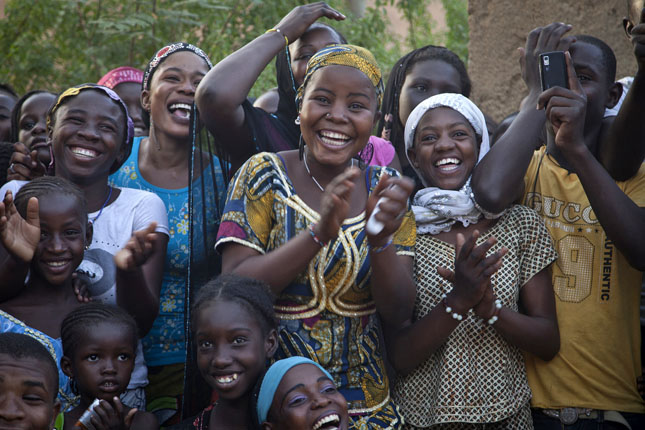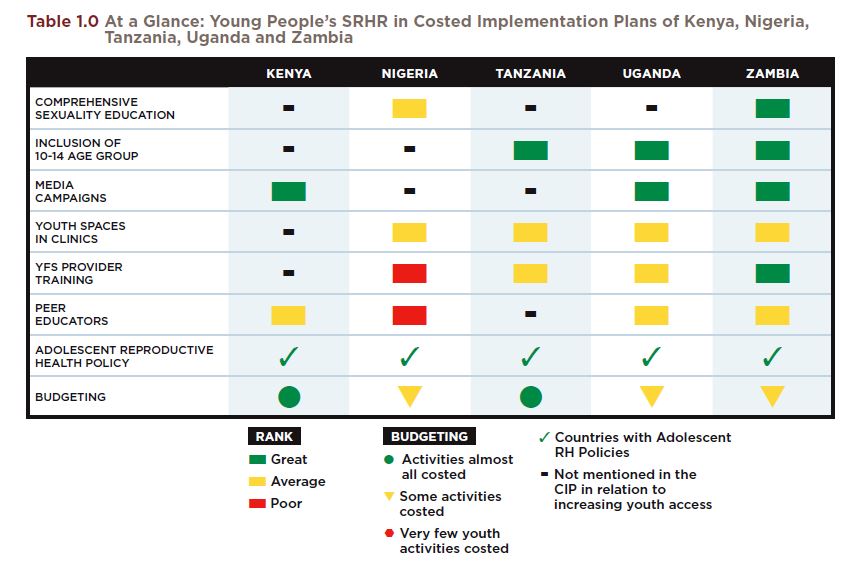-
The Road Ahead for Young People and Family Planning
August 13, 2015 By Katelyn Bryant-Comstock
Yesterday was International Youth Day, and governments, donors, and public health professionals are paying more attention to the unique needs of the world’s young people and the importance of their civic engagement and participation. Unfortunately, most young people do not have access to basic sexual and reproductive health care and information. This not only undermines their health and wellbeing, but significantly affects their abilities to stay in school and participate in their communities.
Nearly one in five girls in the developing world will become pregnant before the age of 18. Consequently, maternal mortality remains the second leading cause of death for girls aged 15-19 around the world. HIV also disproportionately impacts young women. In sub-Saharan Africa, prevalence rates among young women aged 15-24 are twice as high as they are for their male peers.
Maternal mortality is the second leading cause of death for girls aged 15-19Fulfilling the sexual and reproductive health needs of young people is not just important on International Youth Day, it is a fundamental right and one that is especially critical in the context of the new sustainable development agenda, which was agreed upon in early August. The agenda, which calls for ensuring comprehensive sexual and reproductive health education and services for all, increasing gender equality, and improving access to economic opportunity cannot be achieved without fulfilling the sexual and reproductive rights of young people.
Many countries have started developing adolescent reproductive health plans and strategies, but activities under these plans do not always have allocated funds. As ministries of health and countries identify gaps in contraceptive services, young people’s sexual and reproductive health needs are a crucial area that should be addressed.
Assessing Current Efforts
One way to do this is through costed implementation plans (CIPs). Governments create CIPs as action plans to address family planning goals, make progress on commitments, and improve family planning knowledge and access to methods. In the development of CIPs, countries do an analysis of their family planning needs, and then estimate costs and budget activities that will help them achieve their family planning goals. Ideally, these activities should boost demand creation; service delivery and access; contraceptive security; and quality of care, among many other aspects.
With the growing awareness of young people’s needs, how countries have prioritized young people in their CIPs is an important marker for what adolescent and youth family planning services will look like in countries over the next several years. They also serve as a litmus test for advocates to gauge the extent to which policymakers are living up to their commitments to young people and to identify where resource gaps are present.
A new report by PAI, The Road Ahead for Young People and Family Planning, examines CIPs to see where young people are represented in the budgeted activities and if these activities are the most effective at increasing young people’s access to contraception. The first report, which is part of an on-going series looks at the CIPs of five countries: Kenya, Tanzania, Uganda, Zambia, and Nigeria.
Overall, each CIP highlights young people and several have effective, well-budgeted activities to increase young people’s access to family planning services. For example, both Tanzania and Uganda have prioritized the 10-14 age group – one that is frequently neglected in programming and data collection.
However, many missed the mark on crucial areas related to young people’s family planning needs. For example, while Kenya aims to build the capacity of private pharmacies to provide short-term methods, the CIP contains no funding for improving contraceptive services at public facilities, which are the primary source for a large number of young people. Nigeria’s CIP calls for the integration of family planning education in schools, yet fails to specify whether the “Family Life and HIV Education” curriculum will include comprehensive messages about family planning or incorporate a rights-based approach.
Holding Governments Accountable
The results confirm that while most of the CIPs have young people as a focus, continued advocacy is needed to ensure that the line items put forth are realized and attained. If a country has made public commitments to increasing access to adolescent and youth services, but has not committed a budget line to these efforts, advocates should call attention to these gaps and encourage the government to align its commitments and pressing health needs to its financial plans.
Additionally, if a country has a large population of young people who lack access to contraceptive services, but has not outlined goals for increasing young people’s access in its CIP, advocates can use this data to push the government to ensure all citizens have equal rights and access. As some CIPs come to an end, it is the perfect time to assess what has and has not been achieved in expanding access to sexual and reproductive health services for young people.
If governments are truly to improve the health and wellbeing of all their citizens for a more prosperous and sustainable future, they must be encouraged to follow through on the commitments they have made and prioritize more effective interventions in their CIPs.
Katelyn Bryant-Comstock is a research associate at PAI.
Sources: FP2020, The Guardian, PAI, United Nations.
Photo Credit: A young audience enjoys community theater in Gao, Mali, courtesy of Marco Dormino/UN Photo. Chart: PAI.
Topics: Africa, demography, development, education, family planning, featured, funding, gender, global health, Guest Contributor, HIV/AIDS, Kenya, maternal health, Nigeria, SDGs, Tanzania, Uganda, youth, Zambia
 A Publication of the Stimson Center.
A Publication of the Stimson Center.




